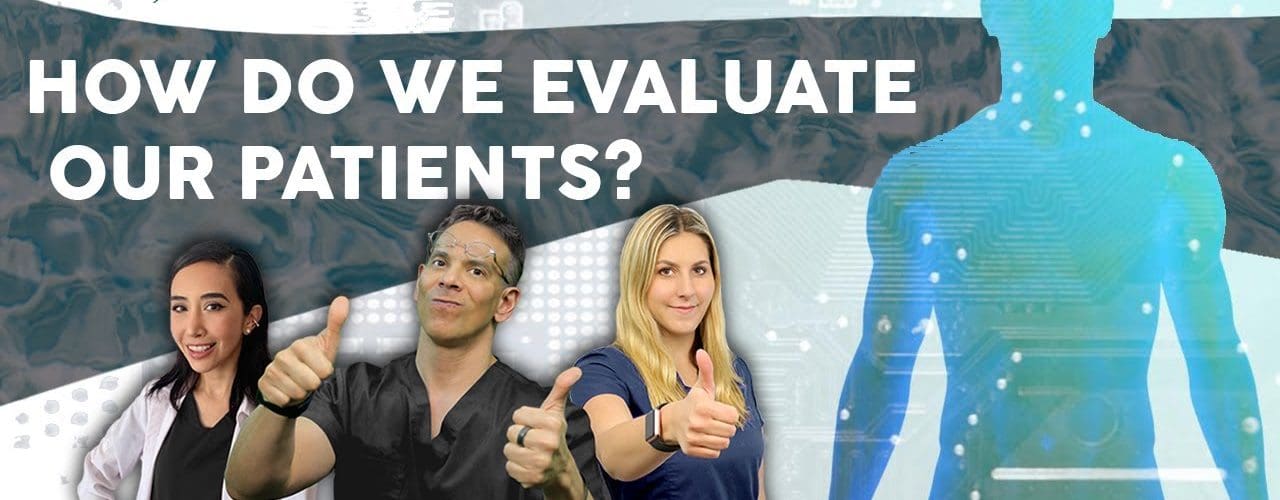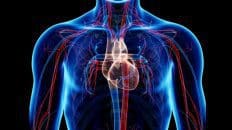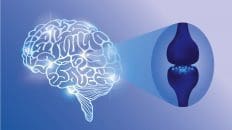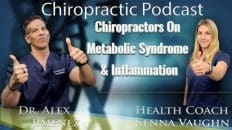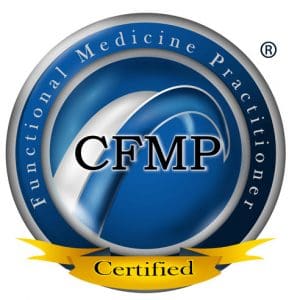Table of Contents
Introduction
In today’s podcast, Dr. Alex Jimenez, Senior Health Coach Kenna Lee Vaughn, and Master Nutritionist Ana Paola Rodriguez Arciniega discuss what is functional medicine and how it is used to evaluate patients.
What Is Functional Medicine?
[01:34:44] Dr. Alex Jimenez DC*: Good morning, guys. Today is the second of March 2021. We’re going to be discussing a bit of what happens in our office. Specifically, we’re focusing on talking about the clinical experience when we come to our office and what people can expect. We try to get dynamics to understand precisely what is wrong with each patient. As you guys know, we run a functional medicine, functional wellness type of practice where we focus on the dynamics of injuries, primarily soft tissue injuries. But as part of this functional wellness dynamics and that’s changing the world, we have to consider other areas so many times when I have a particular patient, we discuss issues such as a back injury, but we have what we call a maybe a clinically obese individual or an individual with diabetes or a person with metabolic syndrome. In that situation, my team here, Ana Paola Rodriguez Arciniega, a master clinical nutritionist, and we have Kenna Lee Vaughn, who is a health coach here, who is my team. What we’re going to be discussing is actually what people experience when they present to an office, right? So one of the first things is once people come in, there’s not only a moment where we take down that clinical history, but we have to assess what is this that is going on in this particular individual’s life beyond not only the present ailment, which is mainly a biomechanical issue, a structural issue, but what is it that is also influencing these dynamics, such as chronic inflammation, joint problem, autoimmune disease, neurodegenerative disorders? And we have to kind of put it together because the world of saying, You know what? That’s not my job. That’s not my issue. You have to go to an internist who is shortsighted, but it is required because there are times when people do need that, and most of the time, I refer. But in the meantime, we’re going to connect the dots of what an internist would do, as well as a neurologist would do if that’s what’s the situation or an orthopedist. As a primary care doctor, my job is to know the difference between what belongs in the practice and connect what we treat with other ancillary professionals. Now we have a lot of great doctors out here in this particular community, and what we want to do is we want to discuss how we interact in the questionnaire component of that. So today, Ana Paola will initially talk about the Living Matrix, correct? Is that is that correct?
[01:37:49] Ana Paola: Yes, we will talk about the Living Matrix.
[01:37:51] Dr. Alex Jimenez DC*: We’re going to be discussing the Living Matrix. We’re also going to discuss the body composition dynamics, the InBody. And thirdly, we’re also going to be talking about the portal of how we accept information with our patients through today’s techniques. What has happened in modern medicine today is that we can no longer see our patients as much. So a lot has to be mitigated or treated through online services, right? So what we need to do is to give people a few insights as to how we wrap around the patient in the virtual world, as well as present to a clinic experience too, because many times there a lot is going on that cannot be handled in practice like a detailed history, clinical nutrition, background, organizing specific laboratory tests, what we can do that if we’re connected to you in this format here, and you have a team wrapped around you. So Ana Paola, go ahead and share your screen, and I’ll start talking as you share your screen about what they’re seeing, and then I can work you into that. So either way, let me make sure that I make you a co-host because I don’t think I can do those things. So I’m also going to make Kenna a co-host. So now that you got co-host capacities of things that we’re learning, go ahead and see if you can share your screen. And from there on, I’ll go ahead and discuss how we take a patient from not only a physical history, but we also want to understand the metabolic type of history that an individual is going through. So are you almost be able to present yourself?
[01:39:24] Ana Paola: Not yet, I’m sorry. I have a few technical issues right here, so let me fix that.
[01:39:32] DR. Alex Jimenez DC*: Well, I’ll tell you what, if anybody understands the technical world, we here at the new world. Or I can’t tell you all the seminars that we have technical issues go crazy. So what we do is just to kind of like kind of shoehorn in the dynamics is… So let me know when you’re available.
[01:39:55] Ana Paola: The history lesson as well.
[01:39:57] Dr. Alex Jimenez DC*: The dynamic history that we take is complex, and many times it requires you to be away from a clinic to fill out these profound questions. And now in these deep questionnaires, what you’ll see is is a complex series of questions when people present to us, they present to us as an individual that with a story now sometimes the story may be accurate, let’s say, verbalize to us in any form of subjective and objective complaints. But what we try to do in this dynamic is to teach people what is going on in terms of the long history now in the long history with seeing what is going on before, after, and during the particular episodes. We can also see the dynamics of a presentation. That is, I think you have to share. You have to pick the picture and the file and then share it, Ana. And then, from there, what we do is we can look at where this problem began. Not only, let’s say we have an individual with a background, but with chronic fibromyalgia. We want to determine what has led to these issues or particular dynamics. And hopefully, be able to share with that individual what’s going on? Can you share your screen now?
[01:41:12] Ana Paola: Can you see it?
[01:41:13] Ana Paola: Because…
[01:41:14] Dr. Alex Jimenez DC*: No, we don’t see it, so we see a dead screen there.
[01:41:17] Ana Paola: Just like that screen, yeah, it’s looking funny. Yeah, I’m going to stop sharing, and we’ll get past that. We’ll try to share that again. Let me try this again.
[01:41:30] Dr. Alex Jimenez DC*: So as we…
[01:41:33] Ana Paola: There you go.
[01:41:36] Dr. Alex Jimenez DC*: So as we go, one of the dynamics of taking a good history is seeing exactly what’s going on in terms of this. So I don’t see your screen, but Kenna, can you see her screen at all?
[01:41:51] Kenna Vaughn: No, I cannot.
[01:41:53] Dr. Alex Jimenez DC*: That’s OK.
[01:41:56] Ana Paola: Let me try again. The third time is the charm.
[01:41:58] Ana Paola: Let me try it again.
[01:42:00] Dr. Alex Jimenez DC*: OK, yeah, there you go. If you can’t, what I can do is I’ll start sharing my screen, and we can figure it out from there.
[01:42:06] Ana Paola: OK.
[01:42:11] Dr. Alex Jimenez DC*: One of the components… let me see if I can. Kenna, do you have your presentation available to you at this time? Remember, we can chop this up in many ways.
[01:42:18] Kenna Vaughn: Yes, I can talk about Coach Care and my aspect of that.
[01:42:23] Dr. Alex Jimenez DC*: OK, let’s see if your screen works. See if you can share your screen and take over the share screen access. OK.
[01:42:31] Ana Paola: Let me see what happened here, man. Thank you.
[01:42:36] Dr. Alex Jimenez DC*: We have a lot to deal with, you know. So go ahead. You have it. So basically, no worries. And then you don’t have to show. Let me see if I can click on Kenna Lee Vaughn’s name here? There you go. What we have here is a presentation. Then I’ll put it in for Kenna Lee Vaughn, where you see our history of evaluating personnel. We have an app, a phone app, under Dr. J. Today app that you can find on Android and Apple. That allows us to be insightful about what’s going on on the basis. Go ahead, Kenna. Can you tell us a bit about this?
Coach Care App
[01:43:08] Kenna Vaughn: Yes. So Coach Care is one of my favorite things to do with patients because it lets us track their progress and send them documents. So we’re able to give them a lot of resources that help them with whatever diet they’re on or lifestyle changes that they’re currently trying to make. Many different resources work with Coach Care, not only just a scale, but we can also track their movements, blood sugars, and even blood pressure. And all of this information gets uploaded to their very own portal. So this is just a snapshot of what we can see in one of our patients. The scale allows us to see their weight change. But the thing that we like about this weight change, as you can see right here, is not only is it just their weight, but you can see the percentage that was body fat and the percentage that was lean muscle change.
[01:44:08] Dr. Alex Jimenez DC*: OK. So let me ask you this question, and Ana, you can answer this too while you’re there. I know because you’re the nutritionist just keeping that screen on, and Kenna, you can kind of like keep the screen on and tell us a bit about how you use the Coach Care app.
[01:44:25] Ana Paola: Well, something that is very useful about the Coach Care app is that it allows us to know what the patient is doing to get work where they want to go. So just by looking at these numbers, we can see if the patient will need a different dietary approach or should we keep the same? Will we give them a little bit more time for them to get back to the health goals they are looking for? So that is particularly one of the essential things about Coach Care. The other thing that I find is beneficial and is a good way of motivation. It’s like self-motivation to see your numbers either going up or down because sometimes people like to see an extra weight change in the lean muscle and the lean body mass. So I think that it’s vital. I believe that it’s crucial for my motivation and monitoring of Coach Care.
[01:45:35] Dr. Alex Jimenez DC*: You know, in terms of, let me ask you this when a patient presents with this Coach Care app, Kenna mention that we can measure blood glucose, body fat along with things like blood pressure? What’s your experience with seeing? For example, in my situation, you saw a lot of variation in my blood pressure throughout the day. This technology works with Bluetooth; by the way, the bottom line is you turn on your phone, and you step on the scale. We provide you with scales. We provide you with the blood pressure cuff systems that just turned on. And actually, we’re going to be able to do not only blood glucose through simple, non-intrusive ways we can see blood glucose, but we can also future tell the ketones that are being produced. Now the ketones, as we know, are a product of fat metabolism. Sometimes, in a diet, we have to adapt to the change in the diet. So what I mean by that is that maybe our diet works to a certain point, but the body’s more innovative way smarter than we are. So as it adapts, tell us what things we look for when a body is being kind of resistant to, let’s say, a weight loss in a dynamic.
[01:46:48] Ana Paola: Well, for example, you are talking about fats and ketones and measuring fats, and so that is very important if we want to lose weight. Others like this particular; you’re talking specifically about the level. So I think it’s the best way to possibly do that because there are very many ways that you can measure your weight. You can either use what you know or draw blood from your body, which I think nobody likes that you can take the urine samples to see if you have issues, I suppose their range, or you can use the level of application that will tell it. Please tell us how your own levels are, just like taking a deep breath and failing in the number of the parts per million of catalogs you have in your body. You will know if you will lose weight or you’re just buried in a plateau. And that’s like the kind of things. That’s the thing that people don’t want to be on, like a plateau, which is not good. So that will be a good measurement for us to know, like, OK, you’re not producing enough ketones for us to get results and the goal weight you want to be on. So let’s make this dietary change. Maybe we can try fasting. We can try a lot of things. And that way, we can produce like a correct change for our right, for our patients instead of wasting time. Because I think that time is the most important thing for our patients to get to their goals. So I think that’s like the right word. You want to get them to their goal in a timeframe that they can access. So I think that could be like a handy tool.
[01:49:01] Dr. Alex Jimenez DC*: OK, so let me ask you this. When I have a patient, and I do this every single time I have a patient, let’s say that is having chronic pain, knee pain, joint pain, and by the mere fact that they’ve had a long time. They haven’t been able to work a lot when I refer them over to you. And we work in a team, so they’re going to be asked some questions. Tell us how you break down and go through a nutritional assessment using the types of things available.
Nutritional Assessment
[01:49:35] Ana Paola: Well, that’s an excellent question, because most of the time people or patients go into your office, then they are just like that, just thinking about one single symptom. And once they are in, they start opening up and talking a little more about how they are feeling. Their symptoms are not only one, but there are kind of intertwined between them, and there are multiple symptoms. So most of the time, what I tend to see with my patients is that they have gas intestinal symptoms. Maybe they are there because they want to lose weight because they have terrible knee pain. They want to lose weight. But once you start going on within the professional interview, you can easily see that that patient has intestinal issues or something is not going well in their life. So you want to make the right questions, you want to make the patient accountable for what they are going through. So I think that that will lead directly to the Living Matrix assessment, which is like an enormous tool, but it’s an excellent tool. And I believe that the most important thing about the Living Matrix is that once you’re enduring the questions, it makes you aware of what you are feeling.
[01:51:05] Ana Paola: It’s so sad when you…
[01:51:06] Dr. Alex Jimenez DC*: When you mention that about the Living Matrix, we’re going to get into that in just a few moments. But the Coach Care app, as I want you guys to see, we can get just dove into your phone. So now you have your doctor with you. The application is going to be able to not only take pictures of your food to be directly is. The last thing we want to do is we have time. I was mentioning the time issues. No, just take a picture of the food. OK, and if you have it, you may not want to take a picture of its McDonald’s, but still take the picture because we can come up with a kind of understanding as to what it is you do. So that makes it real simple. We can also schedule an appointment with you directly from there. And also, you may have a question about specific types of foods replaced. Substitutions, all those kinds of questions can be done on these portals, and we have a team here that can jump in, whether I’m with patients there, they’re going to be alive, and they can answer those questions live. So what the world has changed now? Maybe you had to wait for your nutritionist to get a hold of you within the next visit to a month later. Now you have the same within a few moments to answer your questions, and we can assess what’s going on. I’m not too sure, Kenna; you have mentioned that actually; I would like to see if Ana can try her presentation.
[01:52:23] Ana Paola: I think I can try.
[01:52:25] Dr. Alex Jimenez DC*: You think you try to go ahead and see if you can start sharing the screen and then take over and see if that shares your particular dynamics. Now, as I do that, I’ll continue to talk regarding, and it may be required that Kenna, I think, let’s go of her screen or stop sharing hers in that dynamics? What we look for in the Living Matrix is a system that you know, it’s for some reason your situation has produced it, says it, you started sharing. So I’m going to let it sit there for a little bit and see what’s going on because we don’t see your screen. I’m going to go ahead, and I will show you another thing that we do. OK, so until we get that thing fixed.
The Difference Between Coach Care & Living Matrix
[01:53:11] Dr. Alex Jimenez DC*: And if you can see if I can…
[01:53:13] Dr. Alex Jimenez DC*: Go ahead and pull up, there we go. We got it.
[01:53:17] Ana Paola: You got it.
[01:53:18] Dr. Alex Jimenez DC*: Now we’re seeing it here. We got the telemedicine. Take us through what you do when you do a Living Matrix or a functional medicine assessment, different from a Coach Care app. Coach Care is the thing that keeps us in tune. But in terms of taking down your history, tell us a bit about what goes on in times of the Living Matrix. I can see your screen there.
[01:53:40] Ana Paola: Oh, that’s amazing. So first of all, though, Living Matrix, as I said before, is an excellent tool for assessing the functional medicine approach. So what I want to say about the Living Matrix of the first time you are going to see this is that it will seem like a monster because it takes a lot of time. But it is like a very fantastic tool because I feel that once you’re answering this, you become aware of what is exactly going on. And it can, actually sometimes when you’re in conventional medicine or, well, I will like to call it a conventional nutritional consultation. You try to get the feeling of your patient. You want to get to know them better. You want to know what is precisely the purpose of their office, why they are in your office, and what they need? Why are they here? So once you start going through the process of interviewing this patient, I can tell you now, I think a lot of times it’s by getting to know these patients and asking the right thing and sometimes the patients, because this is something fundamental to patients to understand what they are feeling and what they need. So the patient would start like maybe going through a tangent, and it’s hard to get them back on. So this with the way the Living Matrix will be like a step closer to the proper treatment you want to have because the patient will already know the purpose of the consultation. As you just said before, sometimes the patient is going through some pain in their lower back area, but they still have a lot of symptoms. So what I like about the Living Matrix is that it makes sense. The first thing you want to know is the patient’s health goals, so the patient will be right here and writing down what they want to get out of the consultation. But you have another know there are sections of the way that may take so that current health concerns will be like the second thing that you will be able to measure, right? And you’re able to sort of like, OK, I have two more health concerns and the health history and the lifestyle review, something that we might want to look at to are those antecedents of our patients. And I think that we’ve kind of vaguely touched on this before. There are the things that kind of make sense a little bit more. It makes it easier for us to suffer some things if we have specific antecedents like, OK, well, my delivery mode or my birth delivery mode was as well, then that will be an antecedent for us to have a different kind of conditions or to develop some breadth of these needs. So that will be a significant part of my patient’s health history. And I have to admit that most of the time I’m looking at an adult patient, I’m not thinking about how they were delivered to this world. Sometimes I just want to know why are they having that? That’s significant to me that they are coming here. So, therefore, I’m sorry. So that is an essential thing to know about your patient because you’re getting to the root of its cause. So I think that this is a better way for the patient to reconsider all of the things that are going their lives for them to get to in this specific condition that they are portraying at the given time.
Filling Out The Questionaire
[01:58:04] Dr. Alex Jimenez DC*: You know when you mentioned that one of the things I get with my patients is that they appreciate that they can do this at home on their own time. One of the things that I tell patients to do is find a tiny moment in time that you have probably between half an hour to an hour to analyze what you’ve gone through and in the events of people’s patients that have not only joint pain but autoimmune concomitant autoimmune disorders that are correlated or some secondary impact, such as in fibromyalgia. When we try to understand that when you really sit down and see specifically, as you mentioned, lifestyle changes, you know, the way they grew up, the things, the toxic loans, what they call the antecedents in mediators of these all issues will present itself. We can have a bigger picture, which cannot be done typically within an office. So we have a much deeper level of understanding as to what’s presenting our patients. So they do appreciate that when you have these patients do this, Ana, how do they feel after finishing the questionnaire?
[01:59:11] Ana Paola: After they finish the questionnaire, well, they tell me when I say I just finished my Living Matrix. There you go, I can have it directly on my computer, and one thing is wrong I can go through it and read before I get in front of these patients, or even if I’m having like the Zoom meeting or phone call with the patient, I feel like I already know them. I feel like I already know what they need from this consultation, but just imagine that I’ve never been to a doctor who has like a suit in front of me and said, like, I read your medical report. Like my father is a doctor, I’ve never had that experience. So imagine what it is for a patient to have a healthcare practitioner say to them, like, OK, I know that you had this infection before you came here. And I know that the primary purpose of this consultation is because you have here. But wait, I’ve already seen your Inbody results, and we look in your previous consultation with Dr. Alex Jimenez, and I can tell you that I can make this special finding is right here, and we get to the way you’re answering these questions right here. So that would be like an extract inside to the sense that they will starve or feel like they are like the center of the universe because that is a particular time. They should feel that way. That’s why you are here for them.
[02:00:59] Dr. Alex Jimenez DC*: Yeah, I can assure you that by the time you finish that, we not only know the direction that we need to take, at least at the beginning, but our working treatment diagnosis is also at least set forward at that moment. So for us, it’s essential to develop a deep history and come up with that assessment. Now you had mentioned in that process, you mentioned a bit of the Coach Care app, and we’ve talked about a bit about the Living Matrix, but tell us a little bit more about the Living Matrix in terms of what you wanted to talk about.
How Can I Change My Life Style?
[02:01:38] Ana Paola: Well, I mainly use a lot of the lifestyle review. A daily report, you know, is like my favorite thing to do as a nutritionist because that is like the legs, the things that the most time of your nutritional consultation. And as I said before, sometimes when you’re in that conventional mode of transportation, you want to talk, and the patient is just right there and looking at you like. When is the right time to talk? When am I going to say something important for me? So that way, I can see what they are eating, but maybe do a quick calculation about their dietary or caloric intake. Perhaps it’s the way that they answered some of these questions. Another thing that is so important to me is that you can take pictures of very supplements here in the Living Matrix and write how much the dose you’re taking is. So once you have that type of information, you can give better knowledge and pave your way to like a better treatment for your patients if they are already taking this type of vitamin D. They feel great with this one. Still, it’s very low quality; then I can change it. But if they are taking this omega-three fatty acid supplement, which is super great and it’s like a perfect dose, then OK, I might be able to use that time that I wanted to use to explain the action or the benefits of taking omega-three fatty acid and use it to another thing of my particular treatment that I have for these patients. So that is insightful. Another thing is that medications or supplements are the easiest things to forget when you’re a patient. Most of the time, you’re not thinking about, OK, I take this antibiotic that is called this, and it isn’t bad, and the dose is different that no like no one knows about it the time they forget it and they lose a lot of time. Well, they end your consultation, which runs out most of the time.
[02:04:25] Dr. Alex Jimenez DC*: That’s an important point. Yeah, that one of the things is that when someone is within their own confines or their own comfortable environment, they remember a lot more. They do provide the information. I can tell you countless times when I have patients, and they’re looking at me, and they’re like, I forgot what was going to ask you, or they just kind of like, you know, it just slipped their mind. But later on, they wanted to add that this is the ability for us to be on the same stage. When we look at individuals, we look at not only their physical complaints and health history, but we also look at their lifestyle review, which I see you have right here. Yes, in terms of lifestyle review. Please tell us what we look for to see their environment, specifically with an individual presenting with symptoms.
[02:05:14] Ana Paola: OK. The first thing that is very important for us to know is what type of lifestyle they are living. Sometimes they are. Um, well, I can tell you something very quickly. Most of the people you come to you and say, No, I have like normal lifestyle, and that’s it for them. Their lifestyle is normal…
[02:05:35] Ana Paola: That you don’t know.
[02:05:38] Ana Paola: Nothing is normal now. So one year, if I’m a patient and I’m getting like this report and saying like, OK, what is the average number of hours of sleep per night? And I go like, OK, I watch Netflix from 11:00 p.m. to 1:00 a.m., and then I wake up at 5:00 a.m. Then you’re like, No way, you’re like predicting this awareness because the thing they are worried about is that you are sleeping way less than you are supposed to be sleeping so that they can actually, this is like my third time. Ignored by most of their physicians or as a nutritionist, I’m guilty at times as long as the patient doesn’t mention IBS or Glyde or something like bad. But OK, once I start going through the sleep history and why, why are they doing this? Is there ongoing stress? If they are releasing cortisol or like elevated amounts of cortisol, I know I have to take my treatment other than we did the other way. So this is very good, I’m sorry, excellent information. Another thing is exercise. Sometimes you only ask, like, are you physically active or not? And what kind of activities do you do? Well, that is very important. Nutrition, as I said before, I’m a nutritionist. I’m like all-around this. So this is like a crucial thing to know because most times we get highly educated people to know everything about diet and around different types of dietary intake. So you want to know,
[02:07:31] Dr. Alex Jimenez DC*: Ana, I want…
[02:07:31] Dr. Alex Jimenez DC*: To mention something about that. You just said that we have highly educated patients. I cannot tell you that the world hasn’t changed. It is very different from when I started practicing in 1991; there was no internet. I got to say to you, in 1987, there was prodigy AOL. Today we have exceptionally highly aware patients who have done their research that is walking in with armored knowledge or knowledge in their hand and their brain that they are more intelligent than 99 percent of the people out there in terms of their particular condition. So, sometimes putting it together is the issue, the confusion of what we have? I think one of the more common things that I hear from my patient is the nutritional advice is confusion and going through through through med schools and my clinical experience through all the teachings, it has changed, and it certainly is of footnoted throughout the internet confusingly. So what we try to do is to make sense of it and try to create order, at least when it comes to particular dynamics and nutritional needs in terms of that awareness. How do patients perceive how do you feel? And this may be better for Kenna when patients ask you to go over their clinical records. We have the entire history, not only from one doctor but also from all ten doctors, 20 doctors, 30 doctors, or even just a single-family doctor. How do they feel when you go over that information with them?
[02:09:10] Kenna Vaughn: They feel heard. They feel like they’re not wasting their time with just another doctor; I know it can be so frustrating for patients and people just in general. It’s exhausting when you don’t feel good, and you’re going through all of these steps to get yourself to feel better and lighter. Ana said you spent your whole appointment talking about something that could have been looked at previously. And so when we already have those medical records, we already have these assessments and sit down with them and show them that we care. We’re here for you. We’ve looked at all of these records. We want to talk to you about these next steps. It shows them that we’re prepared, ready for them, and ready to make them feel better. We’re not here to waste your time. We’re here to help you and your life and your lifestyle. And so when we have all these forms, I think our patients feel cared for, and they feel heard and appreciated because their time is still valuable.
How Do I Feel?
[02:10:13] Dr. Alex Jimenez DC*: I think today people want their information. They want people to understand their information, and it’s challenging. One of the most common causes for a poor diagnosis is not having a complete picture. And if what we do is, by the way, we provide you with your portal, so all your stuff will be on there. And if you need, let’s say, go to the Mayo Clinic. They have our history, and it’s crucial to provide other doctors in all different ancillary types of practices and clinical, you know, dynamics to upload this information swiftly and quickly and not have to delay time. So the shortness of up when we compile the information, we don’t just gather that for ourselves. It’s for you to dynamically present it to all your doctors to come up with the primary diagnosis. Now I know where you’ve looked at, you’re looking at illnesses and conditions that we correlate with, and we ask questions on it. Ana, tell us a bit of what you’re looking at there.
[02:11:16] Ana Paola: Well, I’m looking at this section. This is like the second part. I have a consultation at the board. It’s a lengthy assessment, but it goes through all of the different conditions that you might be going through or went through it. It asks you from that, from what is starting date to that end date and that you were feeling this particular condition and you’re able to make some comments about it. And I will use this to write about the medication that I was taking or the specific situation that made me go through a lot of stress that would eventually lead to irritable bowel syndrome. So that would be like in the comment section. But what I like about this is that it’s separated into different sections so you can have the respiratory section, the urinary section and the metabolic action, the inflammatory that can affect cardiovascular, and so on. So it goes on and on with the different symptoms that you could have. As I said before, this is essential for the patients to go through because they will eventually become aware of whether they feel this bad or if the consultation’s primary purpose sat in the right way? Or are they to look into something else they didn’t think about before?
[02:13:08] Dr. Alex Jimenez DC*: So when you say,
[02:13:09] Dr. Alex Jimenez DC*: I think that one of the things, if I may Ana, is that when we hit you as a team, we’re going to be shooting from different directions and we’re going to be fighting as a team, as a unit. What we can figure out in terms of the big picture for a clinical presentation, it is not always evident that a person with shoulder pain, mid back pain, low back pain, knee pain, inflammation, sometimes the correlation into their personal lifestyle from eating habits to prior pass is not so obvious. What we need to do is we need to figure if it is related, and it is. I mean, sometimes it’s real simple. You fall from a ladder, you fell in you, and you broke your foot. Many of the patients we deal with are chronic injuries in chronic dramas continuously plaguing the individual. We can evaluate those systems, and we can do this in a suitable format and take advantage of today’s present dynamics, such as a COVID period. You know what? We need the person’s thoughts and figure out what happened to develop an excellent clinical experience in terms of the experience with Kenna; I know you’re going to present the other part of the application, which is the anthropometric measurements. That’s what we do. So are you able to share at this point? Yeah. Yes. Go ahead and share your screen, and then we’ll come back to this one after Ana. Thank you for explaining that. And we’re going to be able to do this in a much more elaborate way. So now we’re going to go ahead, and we’re going to take a look at the basics of understanding how you wish your body is at and how much inflammation you have. And we do that through lab tests. We do that through anthropometric measurements, which means we may have body composition. So Kenna, tell us a bit of what we see when dealing with individuals, specifically with body composition assessments? Here you see me. I guess that’s me there. So hey, hip eyes, OK? You can see what I’m made of, guys. So you can talk to me a bit about what’s going on in terms of just my physiology. Tell me a bit about what you see here.
[02:15:15] Kenna Vaughn: Of course. So let me take a look at our patient’s reports. This first page is significant because we can see this visceral fat area right here. Visceral fat is the fat that surrounds your internal organs. The higher visceral fat percentage you have, the more susceptible you are to getting chronic health conditions. And usually, that means that there might be something else in your body that we want to look at, whether it be a metabolic syndrome or something along those lines where inflammation is present. We see the line go straight across here at 100. This is ideal, so we’re looking for we want our patients to be as close to 100 as possible. And so you can see right there, this patient is at 115, so not too far off. But we want to work on getting it to lower to improve their overall health. We can also take a look down here where we can see that it separates the fat into every area in the body, which is so helpful you can see what leg is bigger than the other leg. This could be muscle. As I said, this could be fat. They can also look at that inflammation factor to see if one leg is bigger than the other. They might be having edema in that leg. There might be something else that we need to take a better look at. And so, this test allows us to do that. We usually do this test once every eight weeks with our patients to keep steady progress on them and recheck that visceral fat recheck if they’re having edema and additional swelling. See if they’ve improved on their skeletal muscle mass. These things are all very, very important, and it also helps us make sure that the program they’re being put on is working for them. This gives us more than just their BMI. It gives us a very detailed inside look.
What Is The Healthy Way To Change My Body?
[02:17:13] Dr. Alex Jimenez DC*: And when you kind of like to look at this particular situation with this specific individual, you can see that the right leg on the segment of fat analysis on the lower right-hand side, you can see that the right leg has a little bit more fat on it, OK, than the left leg. It’s interesting because this particular happens to be myself, and I had a knee injury, and I’ve always made sure that I have to work that leg a little bit more. But you can see that the amount of adipose tissue on that leg is a little bit more than usual, precisely because of a knee issue present, and that is what we’re dealing with. So the ability of the muscle to output and push more load is seen here because you see a segment of body fat analysis increased a little bit on the right leg versus the left leg. Now that’s a very minor to minor change, but two percent is something that can be calculable, OK? Now, in terms of this, we will use me as a case study. Here you can see the visceral body fat. If you can go a little bit higher there, you see the mass body fat right a little bit lower, a little bit lower because you’re going to write, which is 20 pounds, twenty point nine pounds, you have to lose. All right. That’s how much it’s recommending that I lose in terms of that now, and I’m at about 230. I know that that may be a bit farfetched for me to try to go to, but if I met 15 pounds, I’d be at my optimal body weight. I’ve always known that 215 is where I feel the best because I’ve seen what Lean does, and lean is very, very good. In this scene, some of my athletes are at zero percent requesting fat and body mass, at least to control it to minimize. And this thing is very accurate. So this gives me a perfect little cadence as to between 15 to 20 pounds that I should lose. It assists me. We measure these regularly, primarily at a minimum, once every month to see the changes. My extreme athletes love this. So they want to see precisely like wrestlers, people in agility sports. They want to see changes, even any new adaptive changes in their diet, training mechanisms, or training platforms. Go ahead, keep going and tell us what else we see here.
[02:19:29] Kenna Vaughn: Yeah. So another thing I just wanted to point out is you were talking about the leg injury. This is why we must have that detailed form from the Living Matrix because, in that form, it asks you about previous injuries and previous things that have happened to you. And so this is just an example of how we can put those two reports together to get down and figure out what’s occurring in the body. If we just looked at this report, we might not have picked up right away that there was an injury. But when we pair that with the Living Matrix, it helps us complete that whole circle of what’s going on with our patients. And so that’s, like I said, an example of one of the reasons why we do all these different forms. If we go a little bit lower, we can see the basal metabolic rate right here. This is how many calories the patient would burn if they did absolutely nothing all day to lose weight. Generally, you need to be in a caloric deficient state. And so we can use this number to help, and Ana can use this number to help our patients fine-tune their diet and eating habits. So that way, they make sure they’re getting enough nutrients to fuel their muscles to continue building muscle and burn that fat. And so this is a super great way to see how we can help our patient get maximal results when it comes to that nutrition side.
[02:20:55] Dr. Alex Jimenez DC*: Let me ask you this. Just looking at that, I think my wife is trying not to use that number this twenty-one hundred and twenty-seven calories. So Ana, is it fair to say that one meatball is not enough for these guns or what?
[02:21:12] Ana Paola: Don’t tell…
[02:21:13] Ana Paola: Her I said this, but it’s not enough.
[02:21:15] Dr. Alex Jimenez DC*: Oh no. See, I’m telling you I need to be fed, so I need some steak or meat. But based on the right thing. So it helps us also determine precisely where our diets should be. So a little bit more information on here. I know that we do a little bit, and I think you can scroll it down or minimize it or make it bigger. I’m not too sure if you hit the bigger box. There’s a little upper box up there. OK. Click on that one. When you look at that and see what happens there, see on that one, can you scroll down to more information about where it gives the water content information?
Body Composition
[02:21:57] Kenna Vaughn: Yes, you can see a tiny bit right here. Let me go ahead and go back. The general body composition?
[02:22:09] Dr. Alex Jimenez DC*: Yes. We also do this a lot of times to understand what is happening inside the body; we have to go a little deeper, such as how much water the cell retains.
[02:22:19] Dr. Alex Jimenez DC*: Versus the outside.
[02:22:21] Dr. Alex Jimenez DC*: We’re learning that modern medicine is determined that if cells leak their water and go into what we call the interstitial cells or intracellular stuff, basically it’s when we look bloated. So we need to keep the water within our cells to be hydrated if it starts leaking out because we have inflammation. We can measure that here, too as well. Go ahead and scroll to where you were going.
[02:22:49] Kenna Vaughn: Oh yes, right here. I have it pulled up so we can look at the intracellular water is eighty-one, and the extracellular water is forty-nine. So we can see that there is more water inside the cell than outside and look at the lean muscle mass and the body fat mass.
[02:23:08] Dr. Alex Jimenez DC*: Here’s a point where we can monitor the first point of measure where we see the extracellular water. Now we have a point we can now see if we change. So let’s say my extracellular water started going to fifty-two point sixty-one. In that sense, from a forty-nine, we now will notice it, and I can assure you my body will feel bloated to determine what’s going on. So I’m very much aware that even though I may be in my top scorer of 91 percent and clinically, what we call me is obese because I’m approaching 33 BMI, you can see that there’s a lot of other components and explains why going back to one of the main points that BMI is not always the best thing to use to determine body composition, though it’s a start. It says that I am closer to clinically obese than a fit individual. However, the computer can put me at the 91 percentile when we first assess all the figures. Like, say that 91 percentile. Did I say ninety-one percent? OK, so anyway, the point is that we can assess what’s going on. Now, these are private, and they are personal. And I got to be honest with you, many times people don’t want to know. They just rather, you know what I call it, stick your head in the floor or the hole like an ostrich. But this is quietly private, and you can now see what you’ve got to do individually. Now there’s a number where we kind of go down there a little bit. It’s called the phase angle. Can you kind of get that in there? Yeah, the phase angle is kind of right there. You see it on 6.3. Now what we’ve had is we’ve had the experience to assess that. A phase angle typically in most patients is between five and seven. Now a six-point three is OK; well, we want to push better. We want to get active. Now let’s assume we can look at what is someone who looks like a five versus one person who is at a seven? The best example I can use is that if you compare it to a library, a scenario where people are quiet, and they’re not moving very much in very much at a slow cadence, that would be a cellular activity where you have, let’s say, taking a big test. You have, let’s say, 60 people in the library, but they’re all quiet. They’re not supposed to talk to each other, and they’re being maintained at bay. That would be a five. You take something to a seven, and then you’d be looking at something like a rave, like a dancing rave where people are much more energy, and they’re dancing. And it’s a good amount of pulsing. This is telling us the state of activity within all our cells, and the number says, how ready is your body able to sustain a change and how ready is it? How active is the metabolism going on and off at this present time? So phase angle gives us an insight. So if I start running and I start getting active, it would be at a higher rate if I measured my phase angle not too long after that. But it’s great to measure a resting phase angle because it tells you how ready your body is to sustain. Now, I don’t know if you can, Kenna, but can you go to the next page over? Can you see if you can get to the other report as you kind of have to kind of pull it down? And that may be under the…there it goes the other page on the right-hand side. So what we can do is often want to look at things such as the water composition. So in that sense, I know it’s a bit kind of iffy there, but we’re trying to look at the body water composition. So if you don’t, that’s OK. It’s no big deal. What we do is if you can look on the right-hand side, you see that the second report is there go to InBody sheet on the second tier, which is InBody, and there’s a little dropdown right there, a little dropdown or an exercise on the upper left-hand side. It is right there. There’s a little dropdown, yes. And go to water results. See if you can click on that and let that pull up in that sense. We can also see what the body fluid is. Now, as you scroll down here, it’s a much deeper analysis of where we stand now. The goal here is extracellular bodyweight plus total body weight analysis; right in the middle center, you’ll see, is a point three seven. Our goal is to get your biology to a point three seven, so that’s our goal to help. When we see that number inching up, we start noticing an overall balance of too much water fluid intra versus outer cell. OK, so to make it look, once we assess this, this gives us a basic what they call anthropometric measurements in terms of what’s going on. So in review today, we’ve covered not only and didn’t cover the initial history where people come in talking about what particularly hurts, but we also talk about the additional areas through the Living Matrix that is affecting their particular lifestyle and or their families dynamics, we learn a lot about their presence in every situation. We use the Coach Care app to discuss what goes on within individuals and teach them how to take accountability in the information easily. Because there’s one thing we all have, and for sure, there is in pretty much anyone that doesn’t have one of these around them. So this is your best friend in terms of recovering information and pulling it in so that we can see it. The team will be able to splice the information in full medical records from all sorts of doctors and pilots so that we can start coming up with exactly what is it that’s causing your fibromyalgia? What is it that’s causing your secondary fibromyalgia to your primary, let’s say, knee issues that do not resolve? We have to figure it out. And at that point, we can make a clinical decision as to which type of profession or which type of science is appropriate for us. You may need an internist, or we may find out that we’re the first people to find out that you have a kidney problem or an autoimmune inflammatory disorder. This is the kind of stuff that we do now to assess the appropriate treatment program. Now there’s one component that we have, and Kenna, you do this as well. You’re the one that organized it and orchestrated the dynamics of physical fitness and the training. So we have a training center where we work with top physical fitness trainers to start getting the body to move so that we can see the changes in the diet and the anthropometric dynamics. So tell us a bit about what we do in terms of offering people the types of rehab that we do.
[02:29:59] Kenna Vaughn: Yes, we have. We work with a facility called PUSH Fitness, and they have so many great and I don’t even want to say there are three levels in this place. They have something for every single body type, every single type of recovery, whether you’re looking to strengthen those joints in those stabilizing muscles around them, or if you’re looking to reduce your visceral fat, and they have almost everything you can imagine with some of the most extraordinary people working there. It’s just amazing.
[02:30:32] Dr. Alex Jimenez DC*: When you mentioned the three floors. The way the facility is designed is that we take into account flexibility, agility, and mobility. Now, you’ll have weights and machines in most contemporary fitness centers. And I primarily say that those are limited to a few joints, such as a bench press is limited to your arms, upper body squats lower, and that’s a contemporary or the old standard gym that we’ve been using for many years. However, when dealing with the type of gym we have, we also have a multi-joint dynamic area. People notice agility, plyometrics, CrossFit type of exercises where you use the entire body. An example would be, let’s say, a burpee planking. You’re using many joints at the same time. We’ve learned the balance of multi-joint versus simple joints or maybe compound joints moving simultaneously. The synergy of both is what’s important in our body. We will always be working with the cardiovascular system, but one component that is sometimes missed is stretching and flexibility. So the way we look at it in that facilities, we first look at mobility, OK, then we work on flexibility. And then ultimately, when we have become flexible enough or dynamic, moving enough, we can start doing agility. What happens many times as people jump from mobility to agility? And that would be something a weekend warrior does. Now I am still 18 years old. No, I’m not. I’m fifty-three years old. However, my brain still thinks I’m fifty-three years old. So what happens is that when I decide to get under whatever plank system, I still think I’m 18 years old, right? I am destined to get injured probably if I don’t watch myself right. So we have to have a normal migratory path, from flexibility to mobility to agility in a progressive way. Now here’s what’s crazy about it. OK, can a 90-year-old person do CrossFit dynamic exercises? The answer is yes. However, we do different levels at different stages. I’ve seen things that are just amazing. For example, I’ve seen it without really revealing more; we’ve seen people in their third trimester doing similar, obviously well, modified exercises while they’re in their third trimester in a way that benefits the birthing process. So not only do we take only precise movements, such as a curl complex moving like a, let’s say, like a bench press, maybe more joints, but dynamic movements such as in a plank or mobility. But we must go back, and we must figure out flexibility. We must work on an individual’s ability to flex and mobilize their body appropriately. Now that seems far away; it is tied directly into fibromyalgia disorders. We’re dealing with autoimmune disorders. We’re dealing with lupus. We’re dealing with things like multiple sclerosis. This is a neurodegenerative disorder that benefits directly from nutrition and exercise dynamics. So when we have a team working together, whether it be something like diabetes, exercise physiology will always be part of it. That’s where Kenna comes in. What we’re eating, how we’re eating, how to adapt those things is where Ana Paola comes in. And we work as a team to make that to figure out what we’re doing. Kenna works directly with the personal trainers and physical fitness and physical therapists and assistants in that facility to improve not only the mobility but the life expectancy of an individual. Because what people won’t tell you if you have bad anthropometric measurements if you have limited mobility or joint pain that directly affects your life. Now, if you have issues with eating well, you may not know that your body stays in an inflammatory state because your body is in these dynamics. So as we deal with these particular recovery programs, we have to bring in a lot of clinical expertise and dynamics to develop the proper treatment protocols. Now that may be a little more than we planned on sharing today, but what I want you to know is that we are going to figure out what’s going on, OK? We are not going to have the perfect answer in the beginning. We have a working history. We will develop the working dynamics and test actually to make things work better. So in the overall process of wellness, medicine, physical medicine, functional medicine, chiropractic, physical, dynamic internal medicine, or even the dynamics of working with all the other doctors, it requires a massive team effort. So one of the things that we do is take advantage of the fact that we live in a very mobile world. It’s a virtual world. And just like you can hear me talking, you too can have the individuals working with your anthropometric measurement tools so that we can come up with the proper treatment protocol and allow you and your family members to enjoy their lives. So I hope I’ve been a little bit aware of the information that we have here to offer you. Is there anything else you would like to add on Ana before we go?
Conclusion
[02:36:15] Ana Paola: Oh, no, I want to say that the same thing that you said before, it’s very important for us to know what the patient is going through because maybe we are like the first line that it’s going to treat them, but eventually we would have to call either an internist or a cardiologist for that to cover the whole spectrum of the condition so that it’s very important. We’re covering the life, so we’re covering them for a very chronic condition. But there are acute circumstances in those same conditions that medical specialists should treat. And the thing is that we need to work hand-in-hand with the need to have these very specialized groups or a specialized integrative medicine, as that is what we want to do is we want to know precisely what it is.
[02:37:11] Dr. Alex Jimenez DC*: That is precisely what integrative medicine as we are presenting it is offering in terms of and I agree with you, Ana. Kenna, is there anything you want to represent there?
[02:37:24] Kenna Vaughn: No, just that we’re always here for our patients. And as you can see, we wrap you around in every way that we can.
[02:37:33] Dr. Alex Jimenez DC*: Si se puedes.
[02:37:35] Ana Paola: We are going to find it.
[02:37:37] Dr. Alex Jimenez DC*: We’re going to discover the issues and, if necessary,
[02:37:39] Dr. Alex Jimenez DC*: We’re going to get the right…
[02:37:40] Dr. Alex Jimenez DC*: People for you to be able to assess it. Thank you, guys, and I appreciate that we’ll be back next week to cover a little more topics in terms of wellness, integrated wellness, functional medicine, physical medicine, injuries, and trauma that are all correlated and more. So thank you, and I appreciate you guys all. Have a great Tuesday, and enjoy your day. Thank you, guys.
Disclaimer
General Disclaimer
Professional Scope of Practice *
The information herein on "How to Evaluate Patients With Functional Medicine | El Paso, TX (2022)" is not intended to replace a one-on-one relationship with a qualified health care professional or licensed physician and is not medical advice. We encourage you to make healthcare decisions based on your research and partnership with a qualified healthcare professional.
Blog Information & Scope Discussions
Welcome to El Paso's Premier Wellness and Injury Care Clinic wellness blog, where Dr. Alex Jimenez, DC, FNP-C, a board-certified Family Practice Nurse Practitioner (FNP-C) and Chiropractor (DC), presents insights on how our team is dedicated to holistic healing and personalized care. Our practice aligns with evidence-based treatment protocols inspired by integrative medicine principles, similar to those found on dralexjimenez.com, focusing on restoring health naturally for patients of all ages.
Welcome to El Paso's Premier Wellness and Injury Care Clinic & wellness blog, where Dr. Alex Jimenez, DC, FNP-C, a board-certified Family Practice Nurse Practitioner (FNP-C) and Chiropractor (DC), presents insights on how our team is dedicated to holistic healing and personalized care. Our practice aligns with evidence-based treatment protocols inspired by integrative medicine principles, similar to those found on dralexjimenez.com, focusing on restoring health naturally for patients of all ages.
Our areas of chiropractic practice include Wellness & Nutrition, Chronic Pain, Personal Injury, Auto Accident Care, Work Injuries, Back Injury, Low Back Pain, Neck Pain, Migraine Headaches, Sports Injuries, Severe Sciatica, Scoliosis, Complex Herniated Discs, Fibromyalgia, Chronic Pain, Complex Injuries, Stress Management, Functional Medicine Treatments, and in-scope care protocols.
Our information scope is limited to chiropractic, musculoskeletal, physical medicine, wellness, contributing etiological viscerosomatic disturbances within clinical presentations, associated somato-visceral reflex clinical dynamics, subluxation complexes, sensitive health issues, and functional medicine articles, topics, and discussions.
We provide and present clinical collaboration with specialists from various disciplines. Each specialist is governed by their professional scope of practice and their jurisdiction of licensure. We use functional health & wellness protocols to treat and support care for the injuries or disorders of the musculoskeletal system.
Our videos, posts, topics, subjects, and insights cover clinical matters, issues, and topics that relate to and directly or indirectly support our clinical scope of practice.*
Our office has reasonably attempted to provide supportive citations and has identified the relevant research studies or studies supporting our posts. We provide copies of supporting research studies available to regulatory boards and the public upon request.
We understand that we cover matters that require an additional explanation of how they may assist in a particular care plan or treatment protocol; therefore, to discuss the subject matter above further, please feel free to ask Dr. Alex Jimenez, DC, APRN, FNP-BC, or contact us at 915-850-0900.
We are here to help you and your family.
Blessings
Dr. Alex Jimenez DC, MSACP, APRN, FNP-BC*, CCST, IFMCP, CFMP, ATN
email: coach@elpasofunctionalmedicine.com
Licensed as a Doctor of Chiropractic (DC) in Texas & New Mexico*
Texas DC License # TX5807
New Mexico DC License # NM-DC2182
Licensed as a Registered Nurse (RN*) in Texas & Multistate
Texas RN License # 1191402
ANCC FNP-BC: Board Certified Nurse Practitioner*
Compact Status: Multi-State License: Authorized to Practice in 40 States*
Graduate with Honors: ICHS: MSN-FNP (Family Nurse Practitioner Program)
Degree Granted. Master's in Family Practice MSN Diploma (Cum Laude)
Dr. Alex Jimenez, DC, APRN, FNP-BC*, CFMP, IFMCP, ATN, CCST
My Digital Business Card






